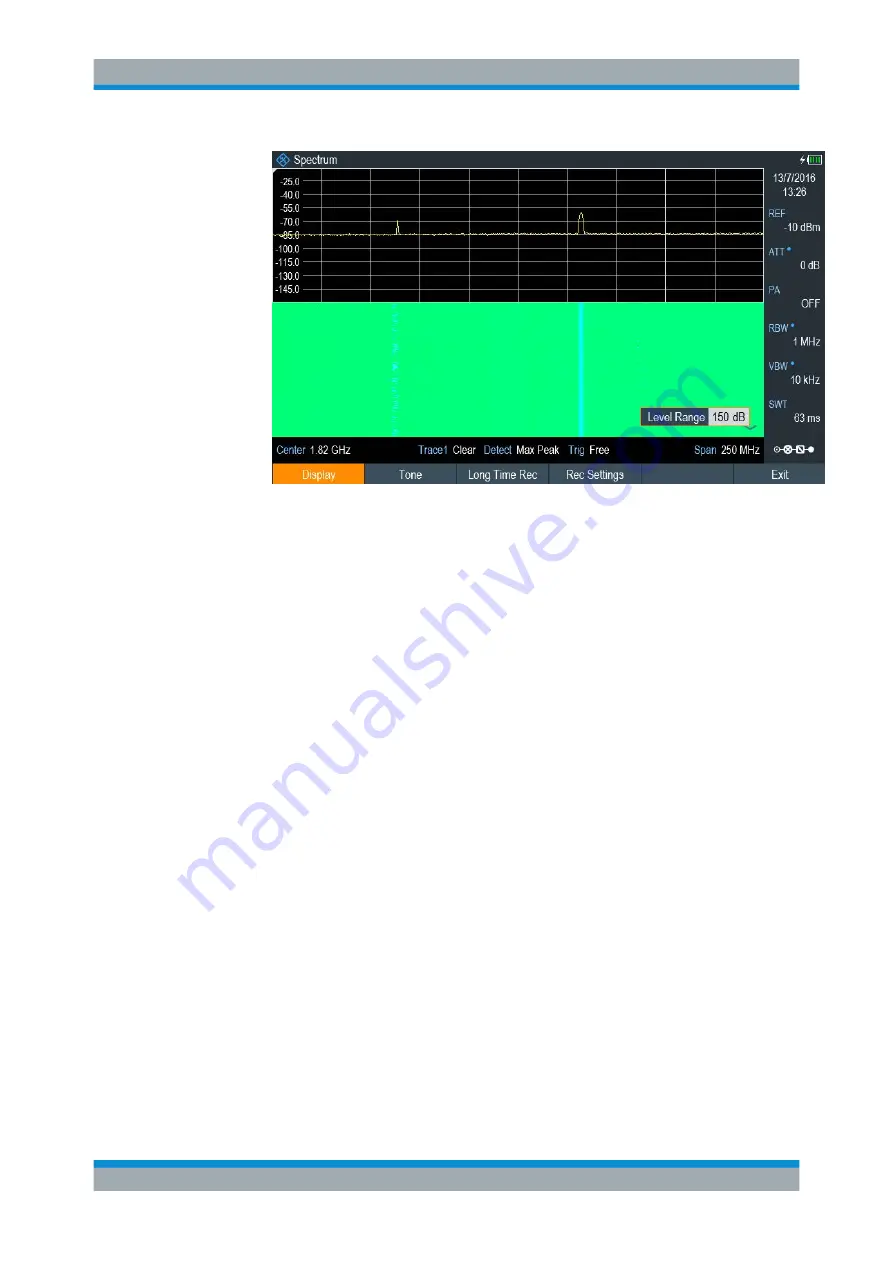
Spectrum Analyzer Mode
R&S
®
Spectrum Rider FPH
148
User Manual 1321.1011.02 ─ 06.00
Example: If a spectrogram reference level is at -10 dBm, the signal parts with
an amplitude of -10 dBm would be blue in the spectrogram. For signal parts
with a very small amplitude, it is dark green. Everything in between is a shade
of the colors between. As the colors are distributed over a very large range
(150dBm), it is likely that you cannot distinguish details in the signal that you
have measured.
Therefore, you should adjust the color map to the overall shape of the signal
that you are measuring. With the maximum amplitude of about -45 dBm and
the minimum amplitude of about -85 dBm, the amplitude range is about 40 dB.
With these settings in a "Green-Blue" color scheme, the spectrogram is made
up exclusively of green colors and it's not easy to distinguish amplitude levels.
To get a better result, change the spectrogram reference level to a level near
the maximum power level that has been measured first.
2. Select the "Display" softkey.
The R&S Spectrum Rider opens a submenu that contains the display settings for
selection.
3. Select the "Reference Level" menu item.
The R&S Spectrum Rider opens an input field to define the reference level.
The reference level should be near the maximum level that has been measured
while the spectrogram was running. In the example, the reference level should be
at about -40 dBm.
4. Enter the reference level.
The R&S Spectrum Rider now shifts the reference level of the spectrogram to the
value that you have entered.
Note that the spectrogram reference level does not affect the spectrum result dis-
play, and the spectrum reference level ("Amplitude" menu) does not affect the
spectrogram. In the screenshot, the spectrum trace is therefore exactly the same
as in the previous picture.
Performing Spectrum Measurements






























